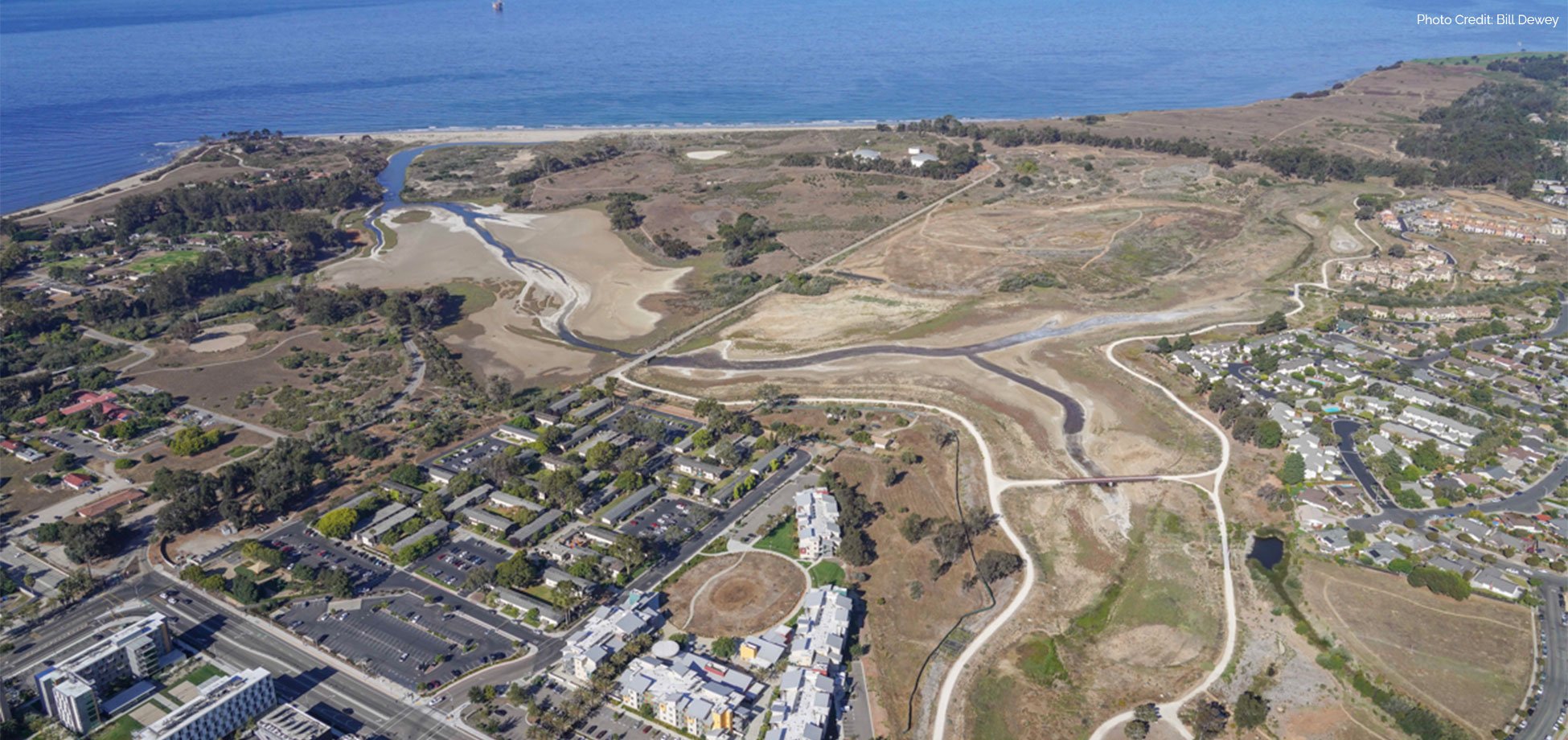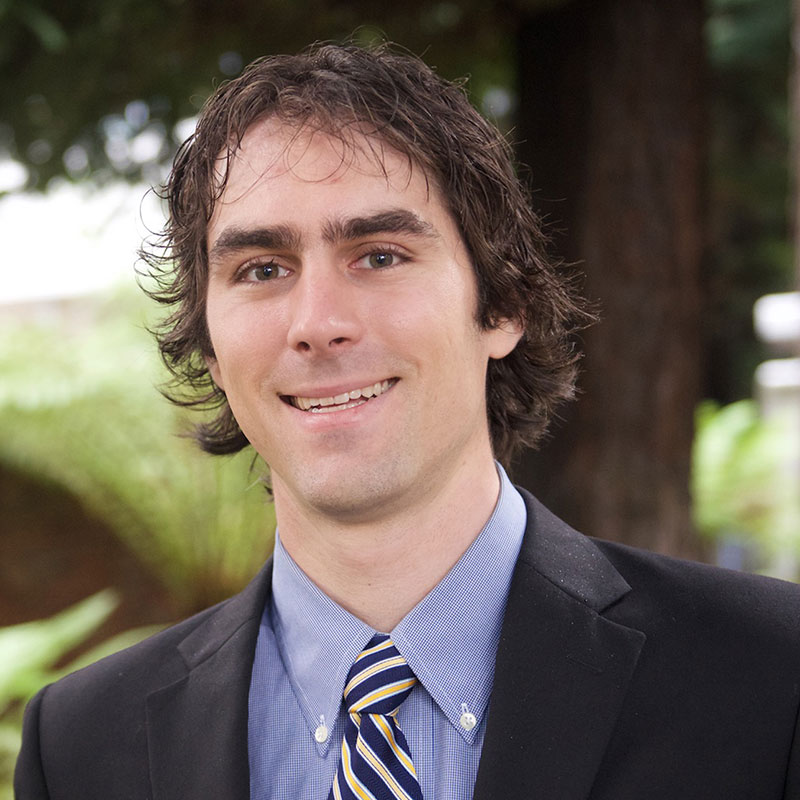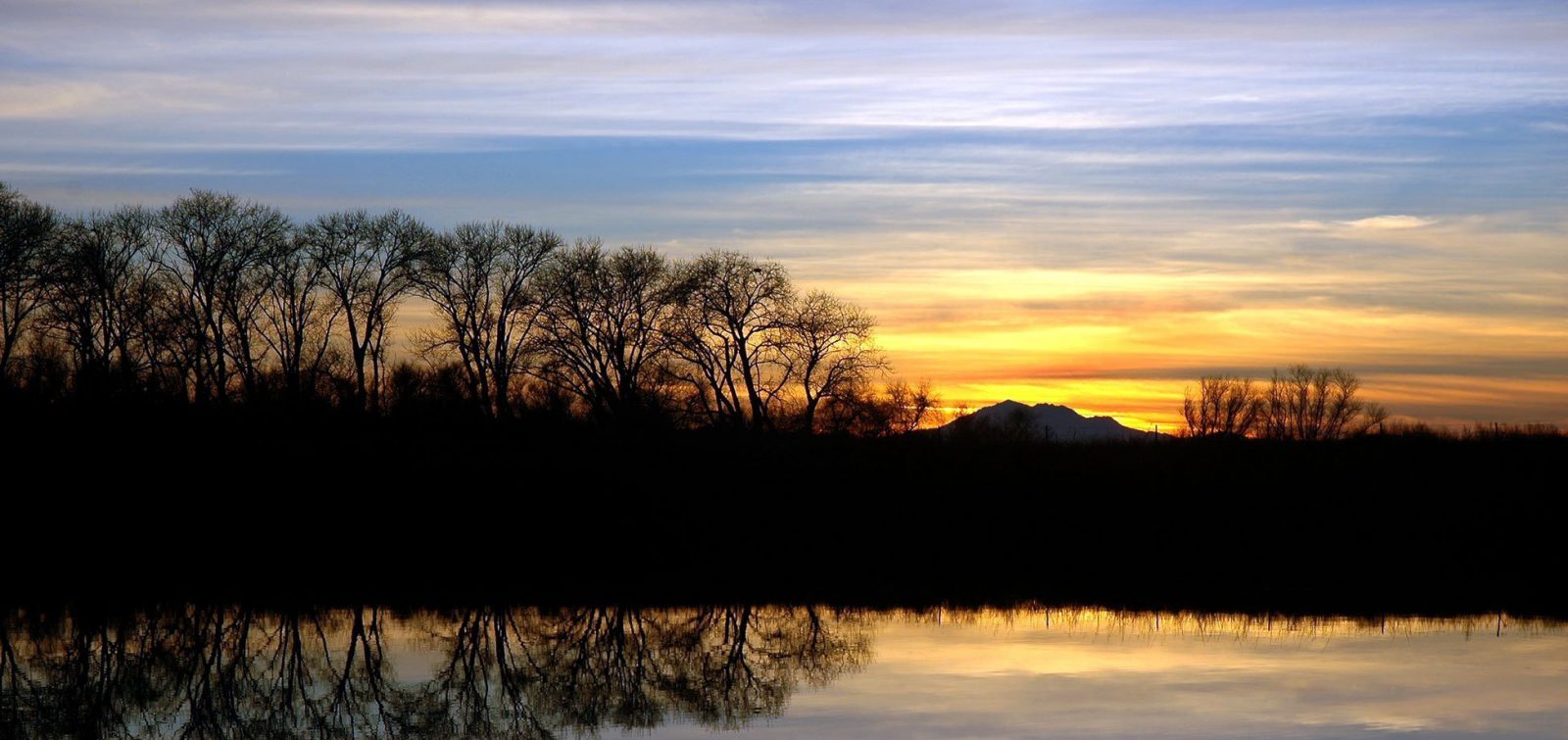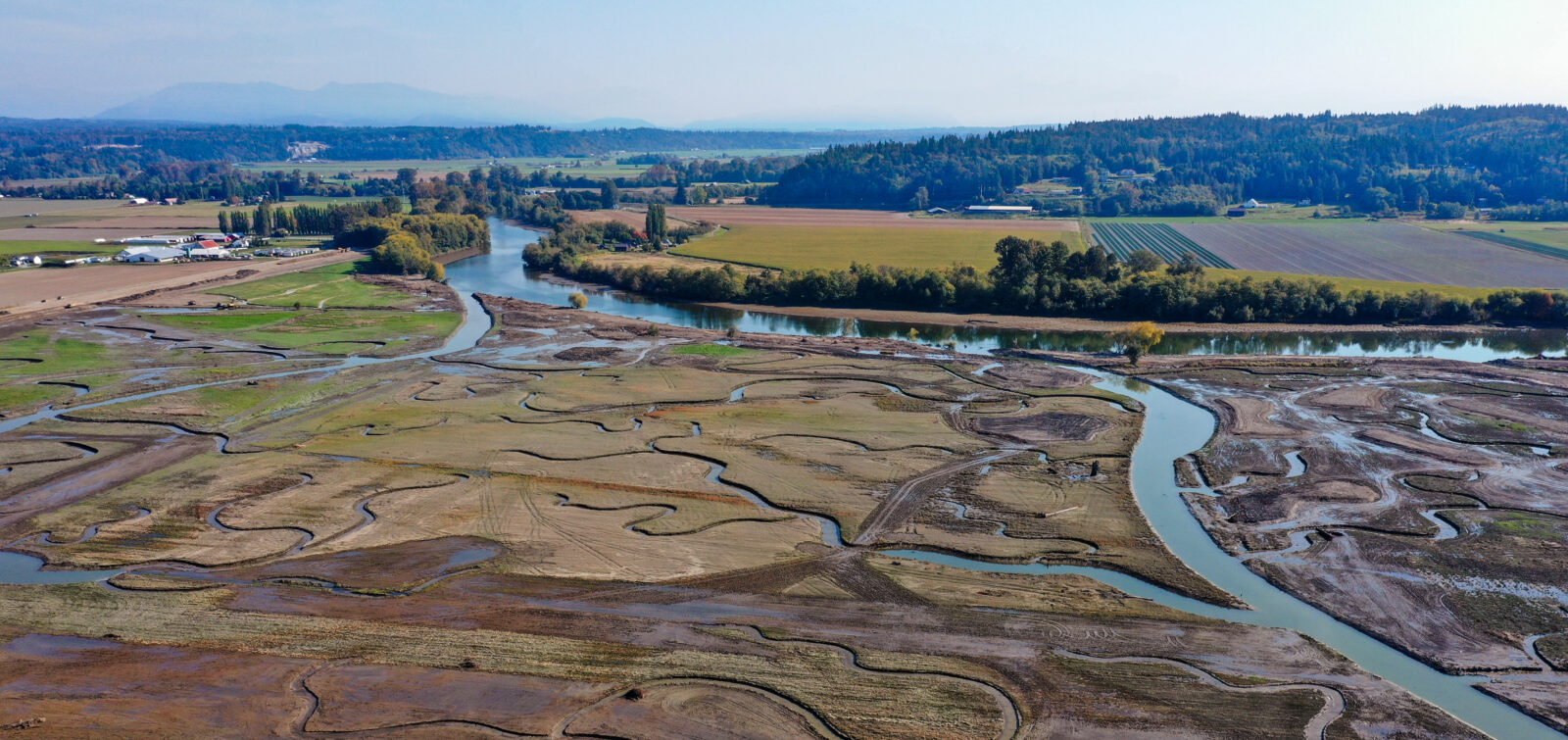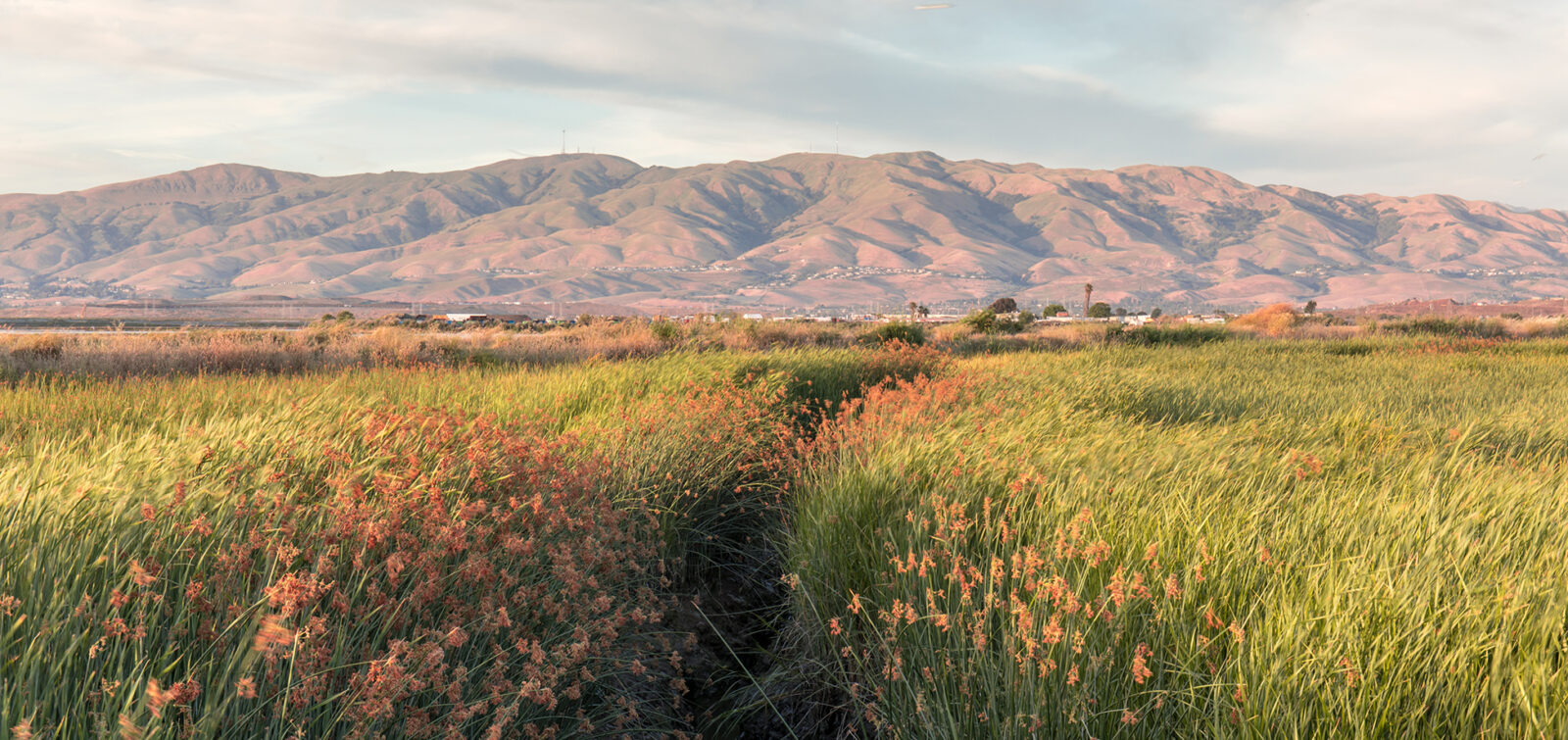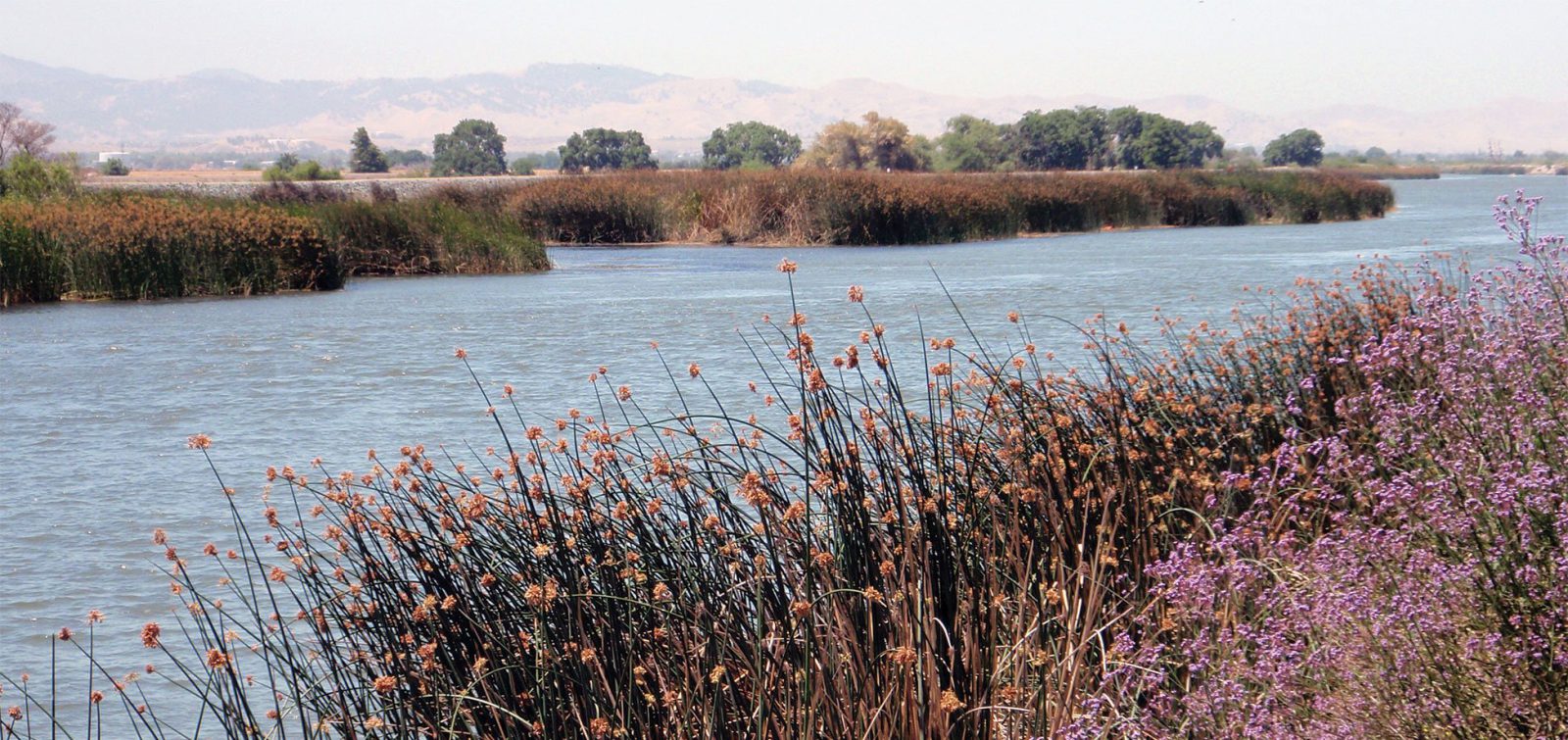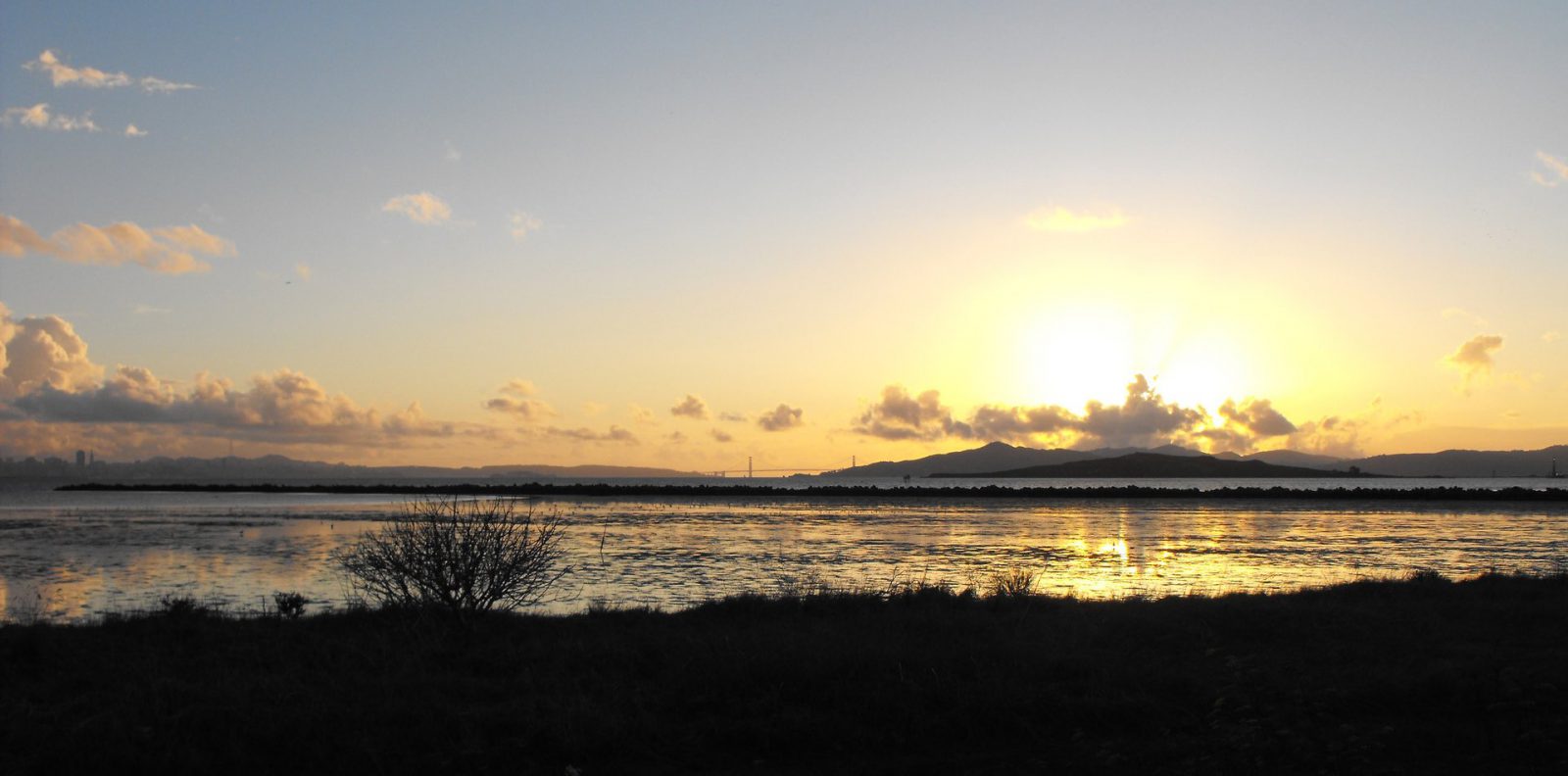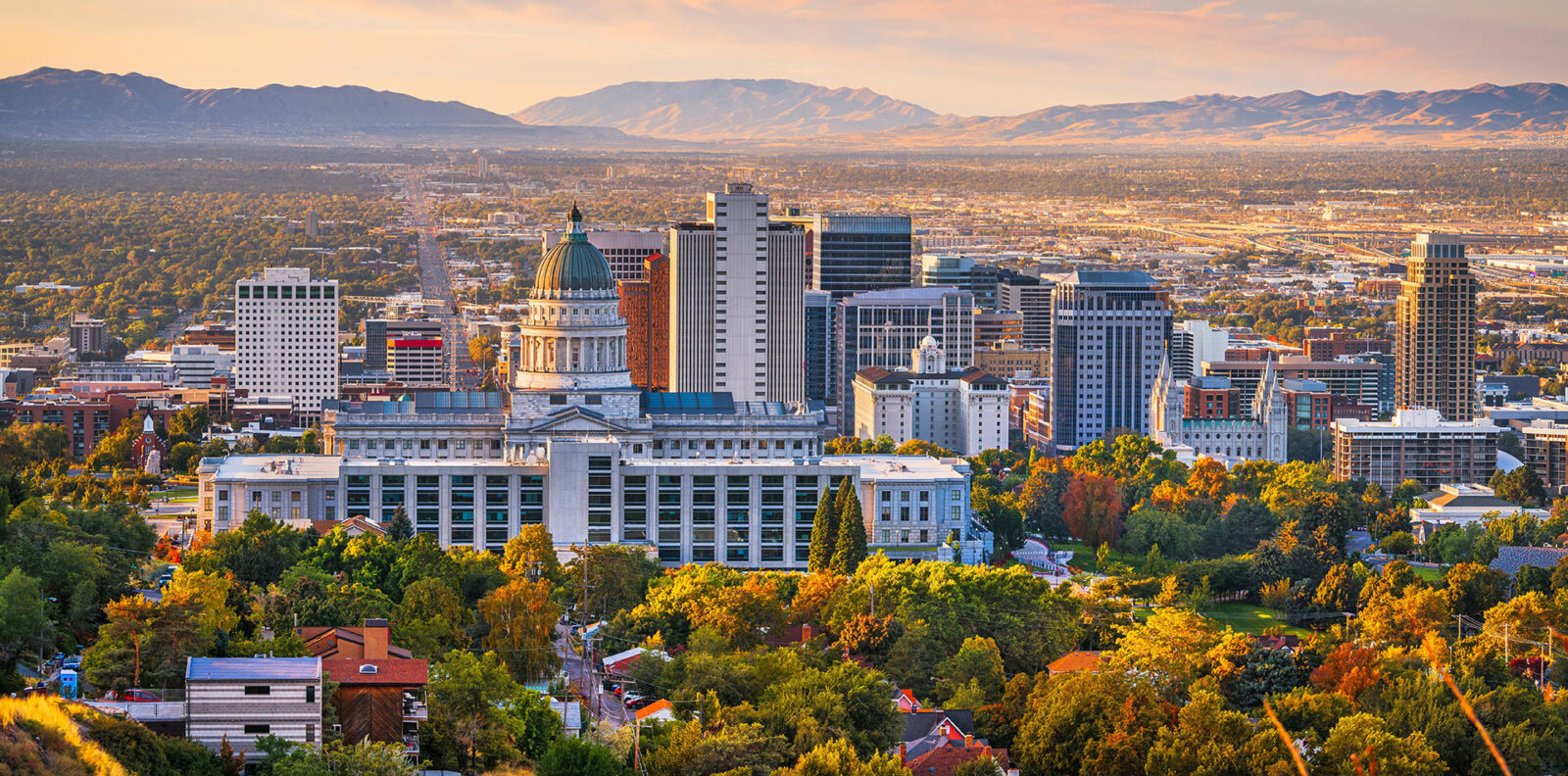UC Santa Barbara’s (UCSB’s) North Campus Open Space Restoration project is an ambitious landscape restoration project currently in its fourth year of implementation. The project has restored more than 100 acres of estuarine wetlands and upland habitats, including restoration of a significant portion of the historic footprint of the upper arm of Devereux Slough (which had been filled in the 1960s to construct a golf course). This multi-benefit project also provides outdoor education and recreational opportunities, creates an improved corridor for pedestrian and bicycle commuters to and from the UCSB campus, and provides flood protection benefits for the community.
The majority of the construction occurred in the summer and fall of 2017, and involved the removal of fill from the historic lagoon footprint, construction of more than two miles of trails, and installation of two new bridges, a boardwalk, and a public gathering area. ESA’s engineers and landscape architects led a multi-disciplinary design team, with support from TrueNature, Stantec, Campbell Geo, and Earth Systems Pacific. The team collaborated with UCSB’s Cheadle Center for Biodiversity and Ecological Restoration (CCBER), which manages the site. CCBER is leading ongoing native plant propagation and revegetation efforts for the project, and will provide monitoring and adaptive management services moving forward.
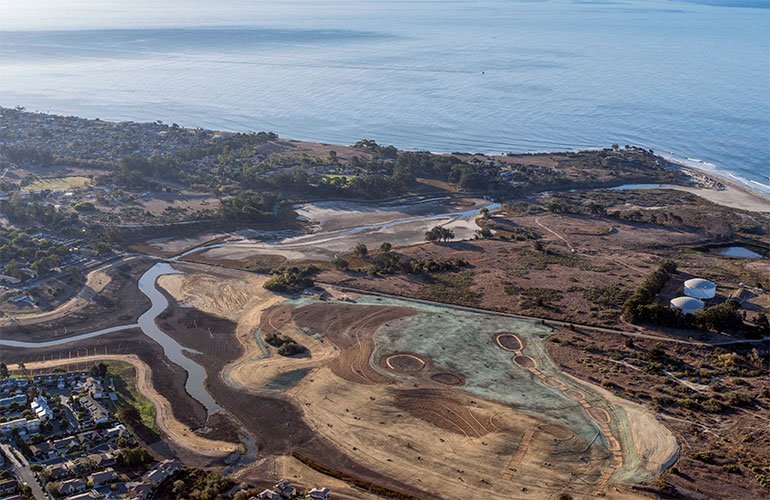
Aerial photography from 2017 by Bill Dewey (www.billdeweyphoto.com) shows the extent of the restoration.
CCBER’s Year 3 Monitoring Report provides an in-depth look at the ecological outcomes of the restoration project to date. In general, the project has met or exceeded almost all of the its performance criteria, including goals for native plant cover and species diversity. Their monitoring revealed that the threatened western snowy plover has begun nesting on the restored sand flats and burrowing owls are occupying the artificial burrows installed on the upland mesa—promising signs that the restored habitat is providing and performing as it should.
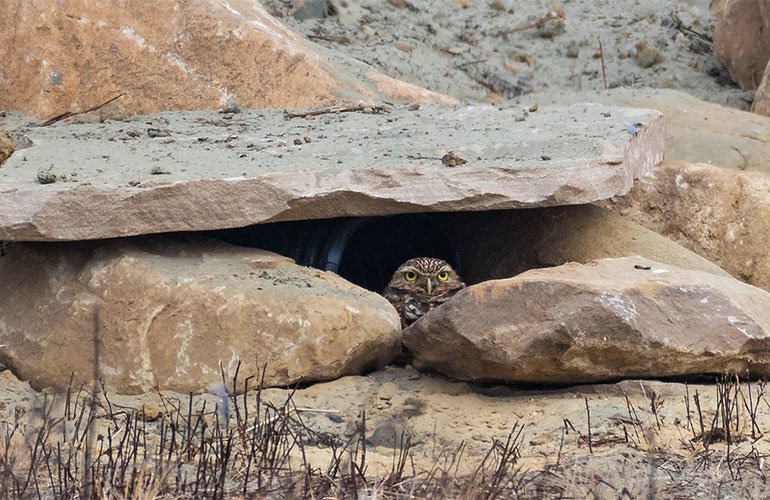
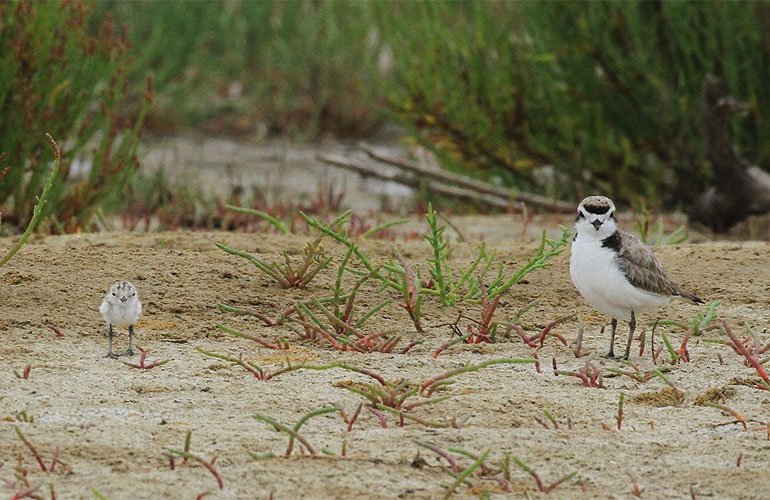
Above, a burrowing owl peeks out of an artificial burrow in the restoration area. Below, the threatened western snowy plover and its chick nesting on the restored sand flats. (Images from CCBER’s Year 3 Monitoring Report.)
The project has been well received by the local community as the new trails are popular with bird watchers and dog walkers alike (although a strict on-leash policy is enforced to protect wildlife). UCSB uses the site as a living laboratory, with several ongoing research efforts and regular educational programs conducted in partnership with local community organizations and schools.
If you would like to see more information on this project, we encourage you to sign up for the North Campus Open Space newsletter, or feel free to reach out to Eddie Divita, Eve Pier Kieli, or Dane Behrens for more information about ESA’s restoration efforts at the site.
